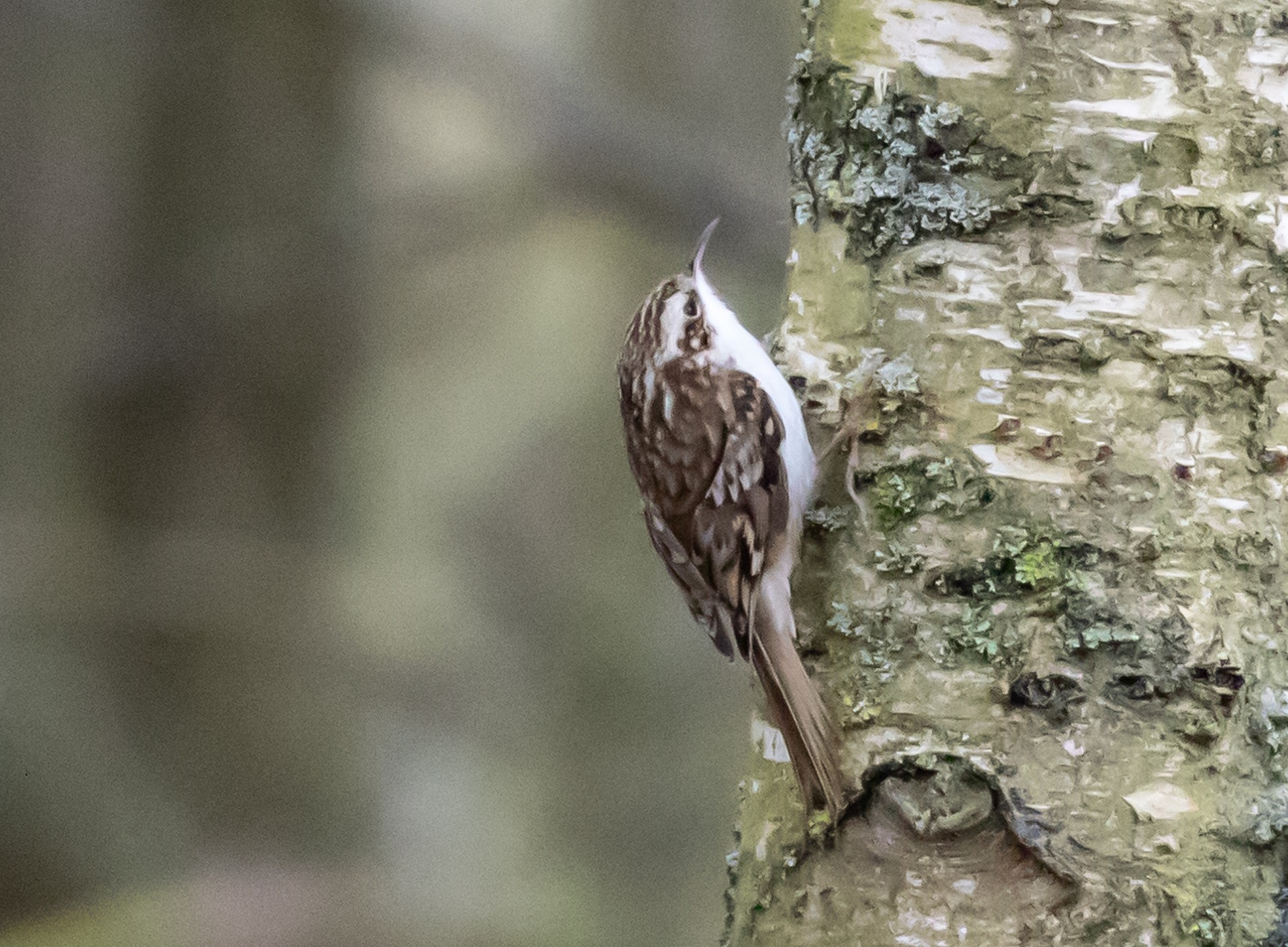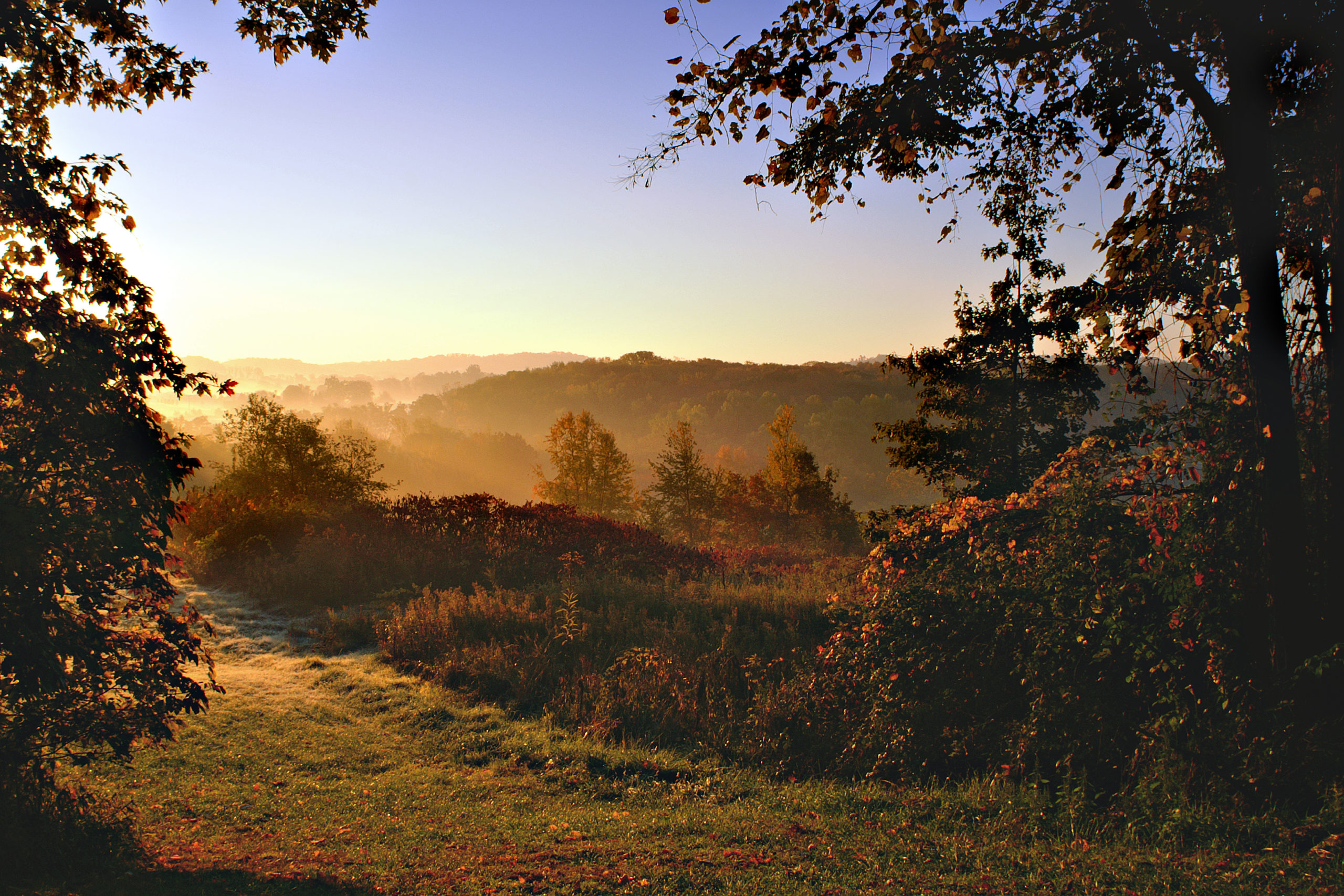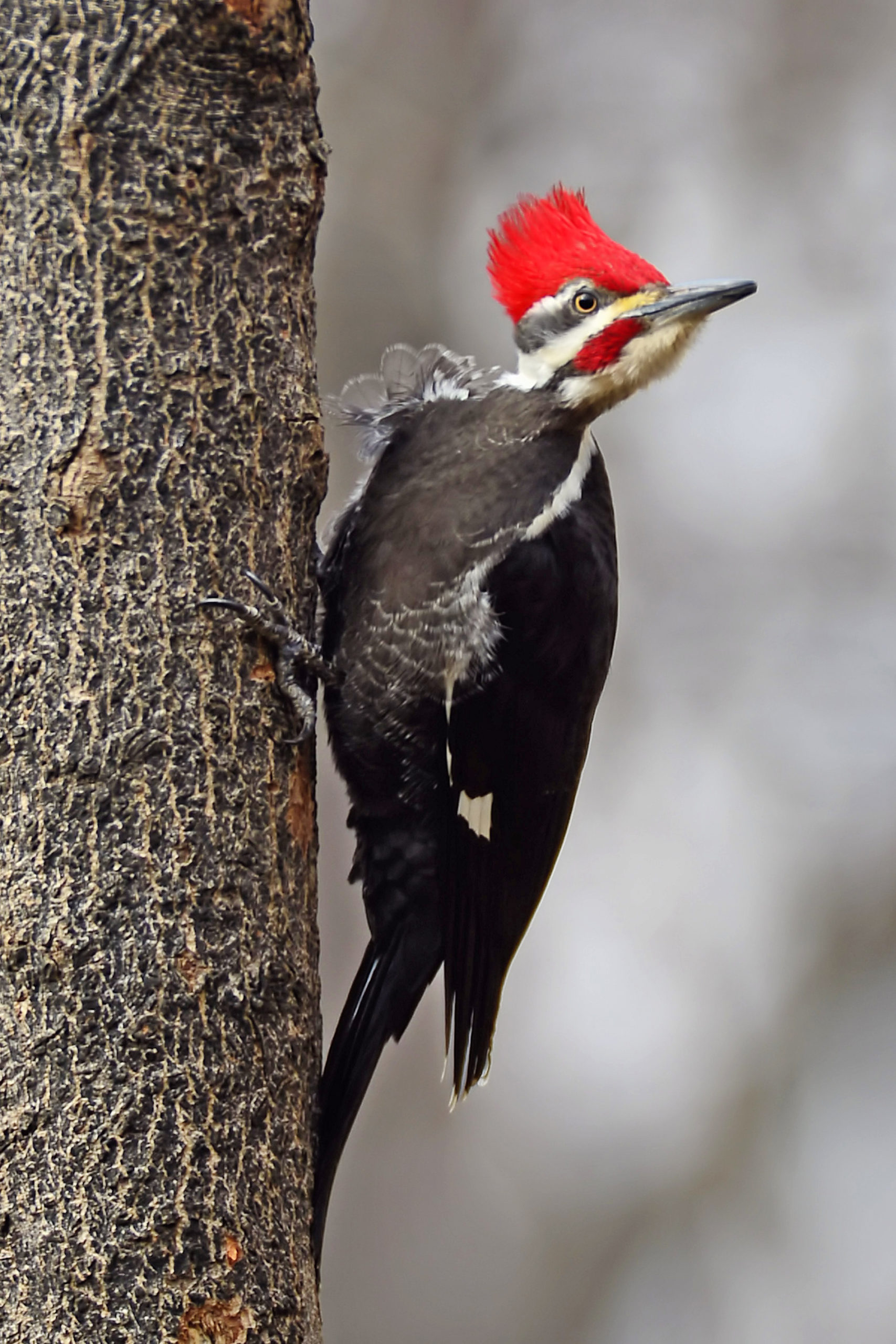KEN DANTER
JANUARY 2020
“I’ve got him. He’s in that tree. See? The one with a dark trunk and a branch going out to the right.”
We’re in the middle of the woods at Chestnut Ridge on the Meadows Trail. There are at least 100 trees, all with dark trunks and all with branches going to the right. I have no clue where to look.
I’ve been joined by Robert Link and his wife, Olivia, on one of my January Metro Parks hikes, hoping to do some winter birding. Robert is blessed with phenomenal birding eyes. He can dig a vireo out in a brush pile in the rain at 50 yards, but he can’t tell you where it is. Few things are more frustrating than trying to locate what someone else is seeing, especially if it’s a rare find.

How many times have we seen a group clustered around some poor soul (that would usually be me) with everyone talking at once:
“Okay, stand here. See that tree with the branch that forms a ‘Y?’”
“How can you not see it? It’s on that branch with the curve that goes to the left.”
“Try this – see that log? (There are at least 50 downed logs.) Go to the right, then up to the branch in front of that other branch.”
My wife Linda and I have developed a technique for communicating the location of a bird that the other cannot see:
First, what am I looking for? Is it a songbird? Hawk? Thrush-like? Second, how far out is it? How far off the ground?
Find an easily recognizable feature in the general vicinity of the bird, such as a unique branch, knot, tree cavity, etc., then relate the bird to that feature. The feature need not be in the same plane as the bird; it could be a bird feeder only 10 feet away or a unique tree on the horizon 300 feet away. Just say, “See the bird feeder? Go five feet to the left then back 20 feet.”
We finally dig out Robert’s bird – a brown creeper that has eluded me so far this month – and continued along the Meadows Trail.
Chestnut Ridge is a relatively new park, containing 486 acres. It is a mix of old forests and meadows and offers a broad range of habitats. The Homestead Trail winds through an old homestead site with numerous features and original landscaping still in place.

This trail reminds me of several years ago, when I had the good fortune to visit a Kentucky horse farm that long since has all but disappeared. A few foundations were all that remained. The grounds had reverted to forest. My guide was a forensic landscaper (a profession I didn’t know existed but I now know I want to be one). After thrashing through the woods for several hours, he was able to piece together the layout of the farm, the probable building locations, roads, gardens, etc., all by locating surviving plants and knowing how and where they were most likely used in the landscape.
The park is named for the American chestnut tree, which suffered a devastating blight beginning over 100 years ago. However, the American chestnut is not actually extinct. The blight only kills the aboveground tree and the roots survive and send up new sprouts. They reach 12 to 15 feet before they too succumb to the blight.
Some of these produce nuts before they die, providing a new generation of trees and providing time for scientists to find a solution. This may include “gene tweaking,” genetic engineering to produce a blight-resistant tree virtually identical to wild trees.
There are also a few remaining trees that appear to be disease-resistant. These are being propagated in the hopes that this trait can be passed through generations of new trees. A disease-resistant hybrid has also been produced creating hybrids with the blight resistance of Chinese chestnuts and the desirable characteristics of the American chestnut.

The Meadows Trail passes through beautiful stands of hardwoods, including a stand of very large black cherry trees. There are also lots of downed logs, many bearing the telltale squarish holes of the pileated woodpecker. The Meadows Trail contains a wide variety of habitat with the forested ridge, pine plantation, and meadow. I saw most of the usual winter birds and a flock of about 100 robins.
The park is about as “owly” as one could hope for. There are several stands of large pines and numerous hollow trunks and limbs. I plan on going back again in the morning in the hopes of a hoot or two.
Birding by ear has the advantage of me not being the only person that can’t locate the bird. Although, my hearing may be in question. At least I’ll probably be alone, so who’s to know what I may be missing? Not even me.
I added four miles to my goal of hiking every Metro Parks trail in 2020. I’m already way behind schedule.
